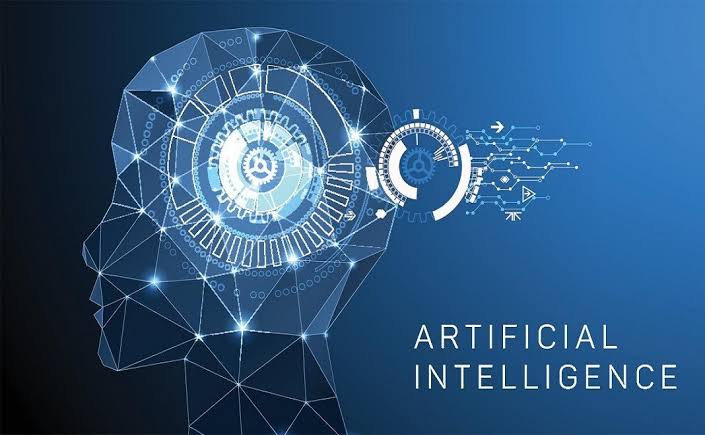Artificial Intelligence (AI) has witnessed remarkable progress in the past few decades. AI has transformed and stirred up industries and our regular lives. The buzz in the air is real. We see a completely disruption in living or working and technology impacting our lives personally and professionally. Listed below are 10 major AI innovations that have the capability to cause significant change in the world.
1. Natural Language Processing (NLP)
Natural Language Processing (NLP) is a branch of AI that concentrates on achieving prompting an interaction between a computer and a human in natural language. Innovations in NLP have led to the development of next-gen language models like OpenAI-s GPT-3 and GPT-4, which can not only understand but also generate and respond to human language with surprising effectiveness. Today-s models lay the groundwork for applications like chatbots, virtual assistants, and in-language translation services. NLP is transforming customer support, content marketing, and access barriers for those who tried to or were unable to speak English, let alone other languages, as well as for those who speak English as a second language (the cognitive market) or people with disabilities that need to improve their speech (dysarthric and anarthric speakers).
2. Machine Learning (ML) Algorithms
Machine Learning (ML) Algorithms are a set of algorithms that form the core of AI (Artificial Intelligence). They can be applied to a variety of data sources to deliver a range of insights on data analysis and data mining over time. Advancements in ML — notably deep learning, reinforcement learning, and transfer learning — have made these algorithms more efficient and powerful. This has pushed back the limits within which AI could operate alone without human help. Today, think about systems that can identify and classify images; moreover they can speech, recognize, drive vehicles in full auto mode such as cars and trucks, just like humans who can identify each other - by some patterns of recognition found in their internal structure of neurons and synapses only ever visible through a microscope, till now.
3. Computer Vision
Computer vision, a field of AI that enables machines to interpret and make decisions based on visual data, has seen significant advancements. Innovations in this area have led to the creation of highly accurate image and video recognition systems. Applications of computer vision include medical imaging for disease diagnosis, surveillance systems, autonomous vehicles, and augmented reality. For example, AI-powered diagnostic tools can analyze medical images to detect conditions like cancer at an early stage, improving patient outcomes.
4. Generative Adversarial Networks (GANs)
Generative Adversarial Networks (GANs) are a class of AI models that consist of two neural networks—a generator and a discriminator—that compete against each other. This innovation has led to the creation of realistic synthetic data, including images, audio, and text. GANs have numerous applications, such as creating high-quality artwork, generating realistic video game characters, and enhancing photo editing tools. They are also used in data augmentation to improve machine learning model performance.
5. Reinforcement Learning
Reinforcement learning is an area of machine learning where an agent learns to make decisions by interacting with an environment and receiving feedback in the form of rewards or penalties. Innovations in reinforcement learning have led to breakthroughs in robotics, game playing, and autonomous systems. For example, Google's DeepMind developed AlphaGo, an AI program that defeated human champions in the complex board game Go. Reinforcement learning is also used in training robots to perform tasks in dynamic and unpredictable environments.
6. AI in Healthcare
AI has brought transformative innovations to the healthcare industry, enhancing diagnostics, treatment, and patient care. AI algorithms can analyze vast amounts of medical data to identify patterns and predict disease outcomes. Innovations such as AI-powered diagnostic tools, robotic surgery systems, and personalized medicine have improved the accuracy and efficiency of healthcare delivery. For instance, AI can assist radiologists in detecting anomalies in medical images, leading to early and accurate diagnoses of conditions like cancer and cardiovascular diseases.
7. Autonomous Systems
Autonomous systems, such as self-driving cars and drones, rely on advanced AI technologies to navigate and make decisions without human intervention. Innovations in sensor technology, computer vision, and machine learning have made these systems more reliable and efficient. Self-driving cars, for example, use AI to process data from various sensors, including cameras, lidar, and radar, to perceive their surroundings and make real-time decisions. Autonomous drones are used in agriculture for crop monitoring, in logistics for delivery services, and in disaster response for search and rescue operations.
8. AI in Finance
The finance industry has embraced AI to enhance decision-making, risk management, and customer service. Innovations such as algorithmic trading, fraud detection, and robo-advisors have transformed the way financial institutions operate. Algorithmic trading uses AI to analyze market data and execute trades at high speeds, optimizing investment strategies. AI-powered fraud detection systems can identify suspicious transactions and protect against financial crimes. Robo-advisors provide personalized investment advice based on individual financial goals and risk tolerance.
9. AI Ethics and Fairness
As AI systems become more integrated into society, ensuring their ethical use and fairness has become increasingly important. Innovations in AI ethics focus on developing frameworks and tools to address issues such as bias, transparency, and accountability. Techniques such as fairness-aware machine learning aim to reduce bias in AI models and ensure equitable outcomes. Additionally, efforts are being made to improve the interpretability of AI systems, allowing users to understand how decisions are made and ensuring accountability.
10. AI and Edge Computing
Edge computing involves processing data closer to its source rather than relying on centralized cloud servers. This innovation has significant implications for AI, enabling real-time data processing and reducing latency. AI at the edge is particularly useful in applications such as autonomous vehicles, smart cities, and industrial IoT (Internet of Things). For example, self-driving cars require real-time decision-making capabilities, which can be achieved through edge computing. Smart city infrastructure can use AI at the edge to monitor traffic, manage energy consumption, and enhance public safety.
